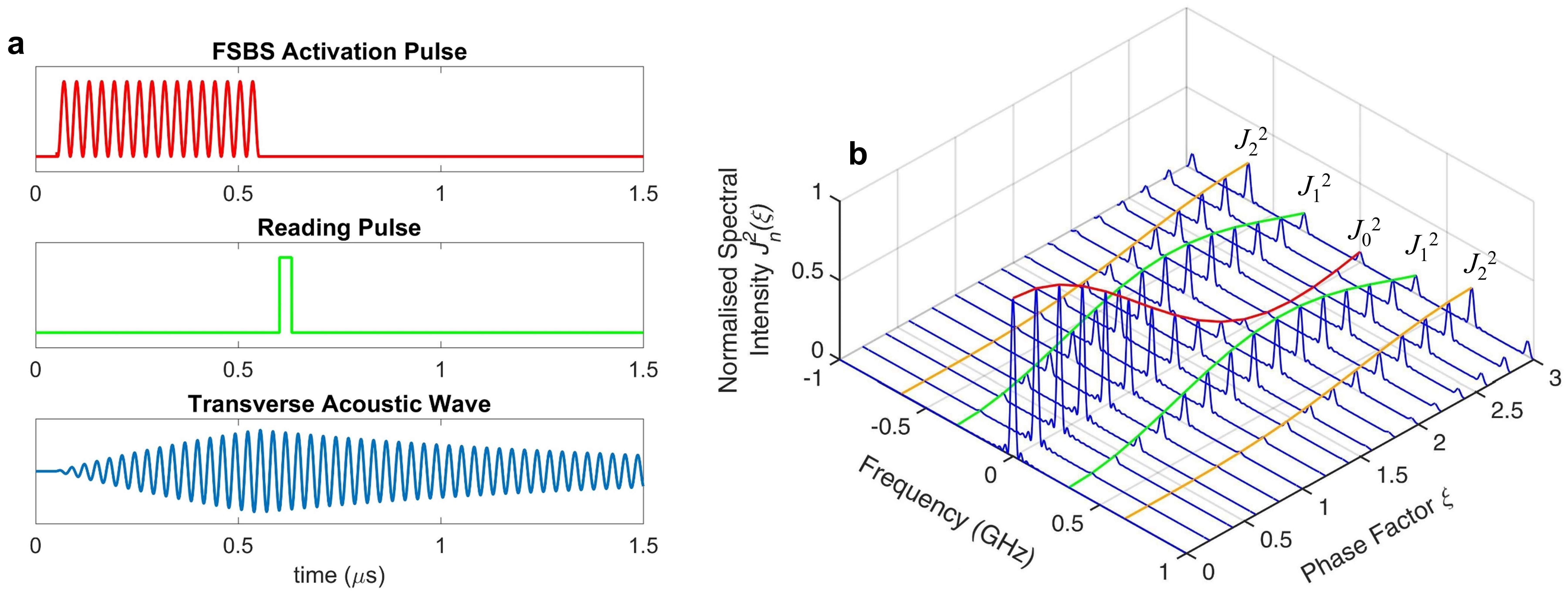
Distributed Acoustic Impedance Measurement Based on Forward Stimulated Brillouin Scattering
2Department of Electronic Engineering, Universidad Técnica Federico Santa María
A technique to measure the local spectrum of forward stimulated Brillouin scattering (FSBS) along a standard optical fiber is proposed. The local acoustic impedance of surrounding material is retrieved from the measured FSBS resonance linewidth.
Forward stimulated Brillouin scattering (FSBS), also known as guided acoustic wave Brillouin scattering (GAWBS), is an optoacoustic interaction in an optical fibre, in which the participating transverse acoustic waves are stimulated through electrostriction. Because of the bounded cross-section of the optical fibre, the transverse acoustic waves are confined into eigenmodes. The quality factors of these resonances depend on the acoustic impedance mismatch at the cladding-surroundings interface. Thus, by measuring the acoustic decay rate or the spectral linewidth of a selected resonance, the acoustic impedance of an external material can be retrieved. Previous FSBS measurement method using a Sagnac interferometer give responses that are integrated over the entire length of a fibre. As FSBS process scatters lights in forward direction, time-of-flight information cannot be obtained directly from the scattered lights, therefore the local FSBS measurement becomes challenging. Here, we present a distributed FSBS spectrum measurement technique through recovering the phase shift of a guided reading light that is perturbed by the FSBS-induced transverse acoustic wave. The transverse acoustic waves in the optical fibre are first stimulated by a long optical pulse, which is intensity-modulated at a FSBS resonance frequency (see Fig. 1(a), red). Subsequently, a reading optical pulse in another wavelength range (see Fig. 1(a), green) is introduced just after the FSBS activating pulse to be phase modulated by the transverse acoustic wave (see Fig. 1(a), blue), thus generating multiple sidebands on the reading pulse spectrum. As the phase shift experienced by the reading pulse accumulates along the fibre, the intensity of each sideband changes, following the corresponding order of Bessel functions (see Fig. 1(b)). The phase shift experienced by the reading pulse can be retrieved by analyzing the intensities of its sidebands. Using Brillouin optical time-domain analysis (BOTDA), the intensity progressions of several reading pulse sidebands are independently selected and measured as a function of distance. In the experiment, the intensity progressions of 3 reading pulse sidebands are measured and the phase evolution of the reading pulse is recovered mathematically through Bessel recurrence relations. The local response of FSBS is then given by the numerical differentiation of the phase evolution. In order to obtain the distributed FSBS resonance spectrum, the FSBS activating frequency is detuned around a FSBS resonance frequency. Here, we manage to achieve distributed measurements of the FSBS resonance spectrum in a 730 m single-mode fibre (SMF) with a spatial resolution of 15 m.

Desmond Chow desmond.chow@epfl.ch
Luc Thévenaz luc.thevenaz@epfl.ch
Powered by Eventact EMS